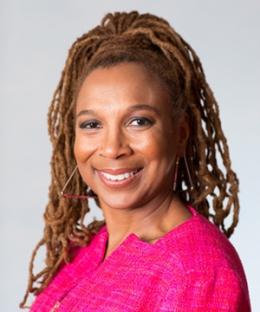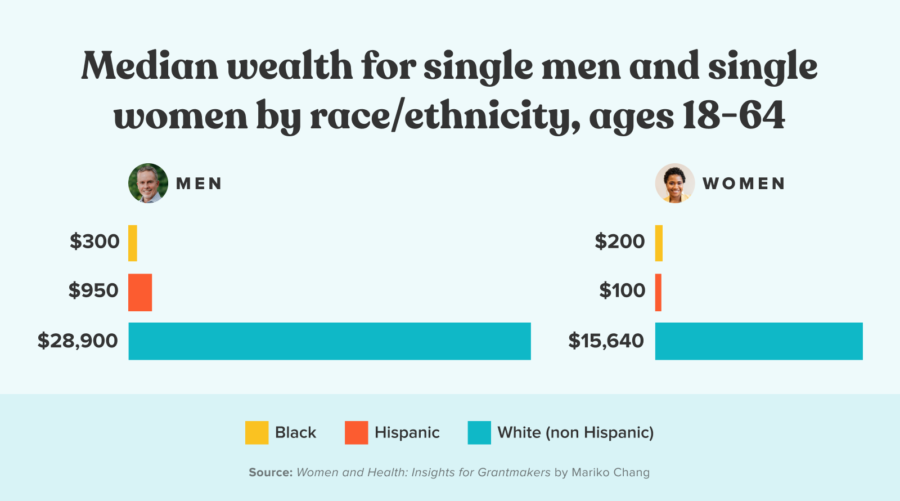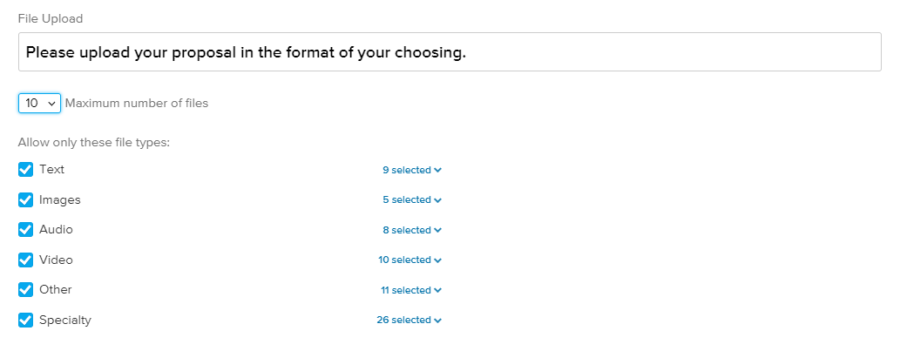For today’s grantmakers to be successful, they need to embrace complexity. The issues we face—from racial injustice to poverty to climate change—are not simple or straightforward. The solutions won’t be either.
Part of embracing complexity is understanding the way people’s unique identities shape their experiences. The policies and systems that have created our current reality do not affect all people in the same ways.
But how do you make space for so many different perspectives?
Applying an intersectional lens empowers grantmakers to honor the true lived experiences of the communities they serve. And it enables them to build toward solutions that will make lasting change.
But what is an intersectional lens? And what does it mean to apply it to grant programs?
Let’s dig in.

What is intersectionality?
Before we get too deep, let’s back up and take a look at the concept of intersectionality. The term was first coined by Kimberlé Crenshaw in 1989.

Intersectionality describes the way social categorizations such as gender, race, ethnicity, sexual orientation, gender identity, disability, and class create overlapping and interdependent systems of discrimination or disadvantage.
Essentially, Crenshaw was explaining the ways in which the systems of oppression are interconnected. For example, a black woman will experience misogyny differently than a white woman and will also experience racism differently than a black man. You cannot separate those experiences.
The key to understanding intersectionality is recognizing that it exists within institutions, not people. In the same way individuals cannot be diverse, nor can they be intersectional. The idea of intersectionality refers to the ways institutions and policies make room for these complex experiences.
Crenshaw puts it this way: “For those of us who live life in these bodies, it’s not a secret. Intersectionality isn’t telling us anything we didn’t know. Intersectionality is speaking to the institutions that didn’t seem to know what we know.”
For grantmakers committed to equity, applying an intersectional lens is an important step.
Build equity into your grantmaking
Get actionable strategies on how to be an antiracist grantmaker.
Why intersectionality is essential for effective philanthropy
What does intersectionality mean for philanthropy?
Intersectionality allows organizations to take into consideration the ways in which people experience multiple systems of oppression and how those vulnerabilities intersect in complex ways.
Too often, grantmakers take a siloed approach to their program design. They create distinct grant programs for specific causes. But these hard borders can create big gaps.
For instance, imagine a grantmaker creates two grant programs. One that addresses racial justice and another for LGBTQ youth. That sounds great in theory, but if there is no acknowledgement that these issues overlap and intersect, then a lot of people will be ignored. Where do queer Black kids fit? Which program honors the full range of their experiences? If the grantmaker isn’t applying an intersectional lens, the answer is likely: neither of them.
To create effective programs, grantmakers need to develop a deep understanding of the multiple layers of systemic oppression that make people vulnerable to discrimination.
Real-world examples of philanthropy with an intersectional lens
The Women’s Foundation of Minnesota is one funder putting these values into practice. Their team applies an Intersectional Equity Framework™ to their work, which includes gender, race, place, and additional identities (ethnicity, sovereignty, socioeconomic class, age, disability, LGBTQ+, and immigration status). So when they invest in community programs, research, or policy advocacy, they are doing so with an awareness of the unique and complex ways community members experience injustice.
In a recent webinar by Grantmakers for Girls of Color (G4GC)—an organization focused on racial, LGBTQ, and gender intersectionality—President and CEO Dr. Monique Morris explained that grantmakers have to take a holistic view of their work because making narrow advancements in equity doesn’t mean much.
“You can’t be invested in racial justice if you’re perpetuating harms in other ways,” she says.
7 steps to apply an intersectional lens to your grantmaking
Equity in grantmaking takes intention. It doesn’t happen by accident. You and your team have to make it a practice across all facets of your work. It may sound a bit overwhelming to take on, but we’ve laid out seven steps to help you get started.
1. Apply a historical frame
All forms of injustice sit within a historical context. That historical context is essential to understanding the multiple layers of oppression and how they overlap.
For instance, consider the racial justice movement that followed George Floyd’s murder. That response was born out of a long history of oppression. You cannot understand that moment without understanding how it sits in history—the racism, violence, and disenfranchisement that precedes it.
As a grantmaker, you want to work to understand history from the perspective of the people most impacted by systemic injustice. This often means listening to voices that have been silenced. Get close to the community and seek to understand the unique ways discrimination and inequity have shaped their experiences.
Be open to learning. You may find that the stories you hear challenge your preconceived ideas. That’s part of the process.

2. Elevate marginalized voices
When you think about the issues your programs seek to address, it’s worth remembering that the people closest to a problem are the ones who understand it best. In particular, those who live at the intersections of oppression are the ones with deep knowledge of how these systems work and what it will take to change them.
Be intentional about lifting these voices up and following their lead. You should be investing in the ideas and strategies from the people who sit at these intersections—such as queer and trans women of color.
As a grantmaker, you also want to value the organizations and individuals who are doing deep movement work, the ones priming our collective consciousness for new ideas.
For example, think about how the Black Lives Matter movement—started in 2013 by three radical organizers—reshaped the national conversation about racial justice.
Don’t undervalue this essential work. It often lays the foundation for transformative change.
3. Invest in solutions that address systemic change
In the same way that intersectionality doesn’t live within bodies, neither does justice. Your programs need to focus on changing the systems and institutions. So don’t build programs around behavior modification at the individual level.
Rather than seeing behaviors as the problem, seek to address the underlying structural causes that give people limited options.
Take this recent report on women and wealth in the U.S. for example. It shows that single Black women have a median accumulated wealth of $200 and single Hispanic women have a median accumulated wealth of $100. Compare these numbers to the median wealth of single white women ($15,640) and single white men ($28,900). You can see clearly from these huge discrepancies that we’re not talking about individual choices, we’re talking about much bigger systems of oppression.

So as you set priorities and design your grant programs, keep your focus on the institutions and policies that need to change.
For example, if you’re trying to provide nutritious meals to kids in low-income households, don’t focus your efforts only on educating parents on the benefits of healthy meals. Instead direct your efforts toward solving the systemic issues: do these kids live in a food desert? Are caregivers not getting enough SNAP benefits? Are low wages forcing adults to work multiple jobs allowing less time to shop and cook?
Of course, as you turn toward these heftier questions, you might find the answers to be complex too. That’s okay. As a whole, philanthropy needs to think more holistically about solutions.
4. Don’t rely on trickle-down justice
Sometimes funders make the assumption that giving to big organizations will have a trickle-down effect. They assume that through processes like regranting, resources will reach smaller frontline nonprofits. But that doesn’t always happen.
Funders need to prioritize giving to these organizations directly. They are often the ones leading movements and most engaged in intersectional work.
To include these organizations, your team might need to rethink your grant application process. A nonprofit with a small team focused on community work won’t have time to complete a long, complicated grant application. Keep things simple and accessible and make the process as easy and quick as possible.

Supporting smaller organizations might seem riskier. It’s likely that they haven’t been around as long as large, well-established nonprofits. They might not have the ability to do complex reporting or create slick marketing materials. Don’t let this dissuade you. If they are trusted by the community and they are doing important work that aligns with your mission, then it’s worth investing in a relationship with them.

5. Adopt participatory practices
Participatory grantmaking allows you to bring community feedback into your decision-making processes. Who better to help shape your programs and priorities?
By creating a formal framework for this dialogue, you’re ensuring that community members have a say when it comes to how you distribute resources. It allows you to hear directly from the people your programs are meant to serve. You can ensure that your priorities align and that your approach matches their lived experiences.
For example, Brooklyn.org (formerly Brooklyn Community Foundation) has adopted participatory practices in their grantmaking. They also apply a racial justice lens to their work. Decisions are made transparently based on insights from the community and always with a deep awareness of the role race plays.
6. Offer multi-year grants with flexibility
Providing unrestricted funding can help build stronger organizations and in turn more resilient communities. Rather than tying resources to specific programs, you allow the nonprofit team to decide how the money should be spent.
This flexibility can help organizations retain employees, build infrastructure, and have the tools to innovate. Plus again, you’re putting the decision-making power in the hands of the people closest to the problem.
If nonprofits are able to take risks, they can try new approaches to making their work more inclusive. This freedom is essential. If, as a funder, you’re forcing an organization to stick to the way they’ve always done things, you might be holding back progress.
Plus, flexibility allows an organization to adapt quickly to urgent community needs. If the team realizes that a certain population is being underserved, they can move quickly to fill that gap.
7. Support coalitions
Justice is not a finite thing.
When it comes to this intersectional work, you have to move away from a scarcity mindset. There’s no pie to be divided up. Instead, consider justice as something we can all move toward collectively.
One way to do this is by connecting grassroots movements. You can fund programs that focus on solidarity and relationship building.
As a grantmaker, you’re in a unique position. You can dedicate some of your resources to bringing leaders and like-minded organizations together. You likely have established relationships with grantees. Leveraging those relationships to help form broader coalitions can help tap into the collective power of the social impact sector.
Find the right tools to support your equity work
Applying an intersectional lens to your grantmaking is ongoing work. It’s not a box to be checked. It’s a practice, one that takes a sustained investment.
You need to leverage tools that empower your team to do deep interrogative work and build meaningful relationships.
Submittable is grant management software designed to help you launch, manage, and measure your grants program. If your organization is focused on making lasting change, Submittable is an ideal solution to support your work.